It’s alarming I know, never a good time for car trouble. But no need to panic, you’re in the right place, I’m a mechanic and I’ll show you how to get your vehicle out of park right now.
To release a shifter stuck in park, access the emergency shift release lever under the shifter assembly. A blown fuse, faulty brake light switch, and a dislodged brake light switch are all common causes of a shifter that won’t move out of park and has no brake lights.
In this post, you’ll learn how to check your brake system fuse and you’ll learn how to get your vehicle out of Park quickly. We’ll also cover diagnosing your shifter problems and how to fix them.
Check the brake light fuse
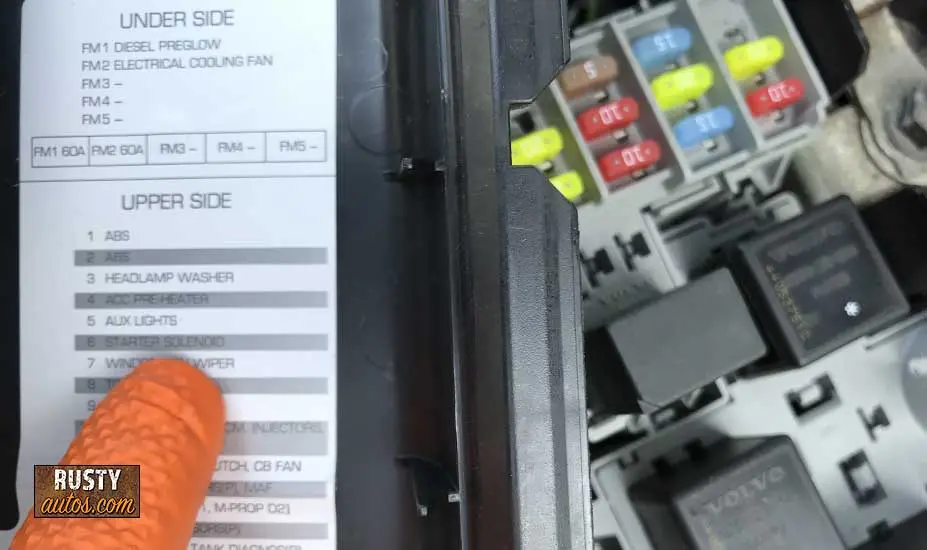
A blown fuse generally is a common problem, it’s not however the most common cause of a shifter that won’t move with no brakes lights. But we’ll check the brake light system anyway, as checking the fuse only takes a few moments and is a lot less work than locating and releasing the emergency park release.
The fuse number will be listed on the fuse box cover or in the driver’s handbook. The handbook is often the faster route as modern cars have more than one fuse box.
After locating the correct fuse, remove it using the tool fixed to the rear of the fuse box cover. Check and replace the fuse is blown.
A fuse that blows immediately indicates a short in the wiring system. If that sounds like your problem, check out this post, you may find it helpful “Car fuse keeps blowing”.
It’s worth also checking for blown brake light bulbs – Check brake lamp bulbs are the correct type and fitted correctly.
What’s Shift Lock?
Shift interlock or shift lock is a safety feature fitted to automatic transmission cars, its function is to prevent accidental runaway vehicles. A child, pet, or operator could accidentally hit the shifter, with auto transmissions that’s a real concern.
In a healthy system, with the ignition on, the shift lock can be heard to click on and off with brake pedal application.
How Does Shift Lock Work?
The shift interlock system may be electrical, electrical/mechanical, or mechanical. The part electrical and part mechanical type is most common. Many systems comprise two locks controlled by two electrical solenoids. They are an ignition park lock solenoid and a shift lock solenoid.
The locks work in combination, turning the ignition to “ON” energizes the ignition park solenoid and causes it to push on a mechanical cable which releases the first part of the shifter lock. Activating the brake pedal energizes the second solenoid and releases the second lock. The shifter is now free to move.
In addition, the ignition key can’t be removed until the shifter is placed back in Park. This causes the parking cable to release and the ignition key may be removed.
Where’s The Shift Lock Located?
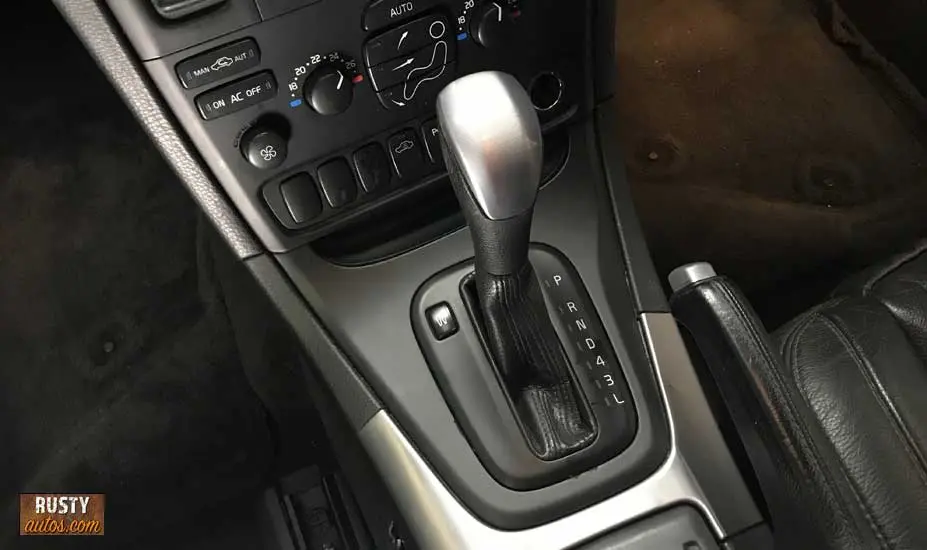
Both locks are located on the shifter assembly (under selector) and are a mechanical affair. The first lock is controlled (usually) by a remote solenoid (located at the ignition switch) and a cable.
The second lock is controlled by a solenoid fitted to the shifter assembly.
How To Access The Emergency Shift Lock Release
The good news is, all vehicles have an emergency shift lock release in case of failure. It’s a bypass for the shift lock if you like. It allows, for example, a tow truck to move your vehicle even when the battery is flat.
Finding the release button is sometimes the most challenging part of this procedure. Some manufacturers make it a ton easier than others. This content is owned by moc.sotuaytsur.
The location of your shifter’s emergency release is covered in your driver’s manual but for most cars access is easy and you’ll typically have a few options to access them.
The emergency shifter release lever is usually brightly colored to make life easy, use your phone light to help find it. To access the shifter assembly, use plastic tools to pry up the facia.
Option one
Many models place an access port right on top of the shifter facia. Removing a small tab, placing a probe (pen or similar) into the hole releases the shifter out of park. Many car keys are designed as a tool for this type of emergency, your key may remove the tab and press on the release lever.
If you can’t find a tab on the facia as described, don’t panic we have a couple more options and we will find your release lever.
Option two

Remove shifter side cover to access the assembly and emergency release lever. This will be a simple task, remember it’s an emergency access cover, so if your cover is screwed down with multiple fasteners then it’s not emergency access. Move on to option three.
Option three

Remove the shifter facia by prying between the facia and the housing. Be careful using metal tools as they’ll scratch or gouge the plastic. Plastic tools work best. Removing the fascia exposes the shifter assembly, look for the release lever.
How To Use The Emergency Shift Lock Release
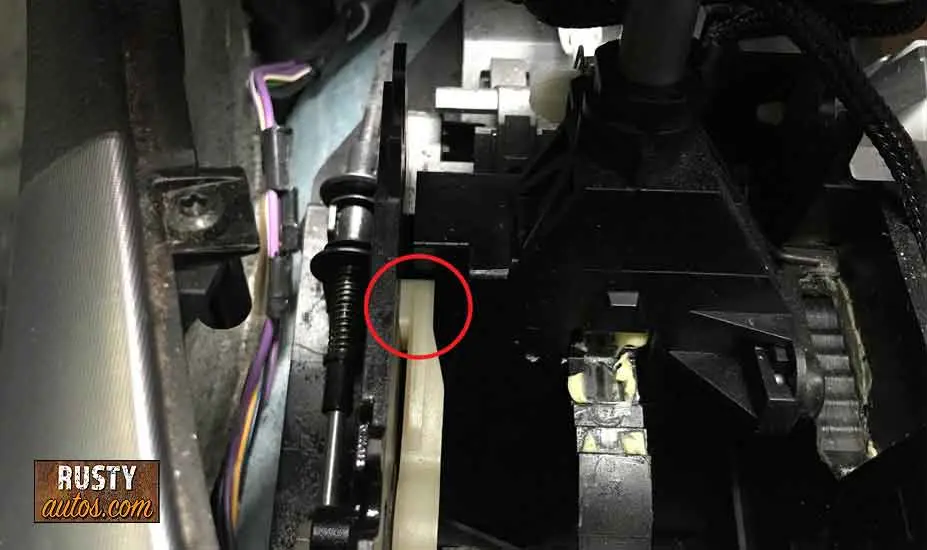
Finding the emergency shift lock was the hard part, good work. Using the emergency release is the easy part. The shifter release loses its mystique as soon as you see how simple it is. Pressing a plastic release button (usually) frees a path for the sliding shifter mechanism. But just before you do so check out the following.
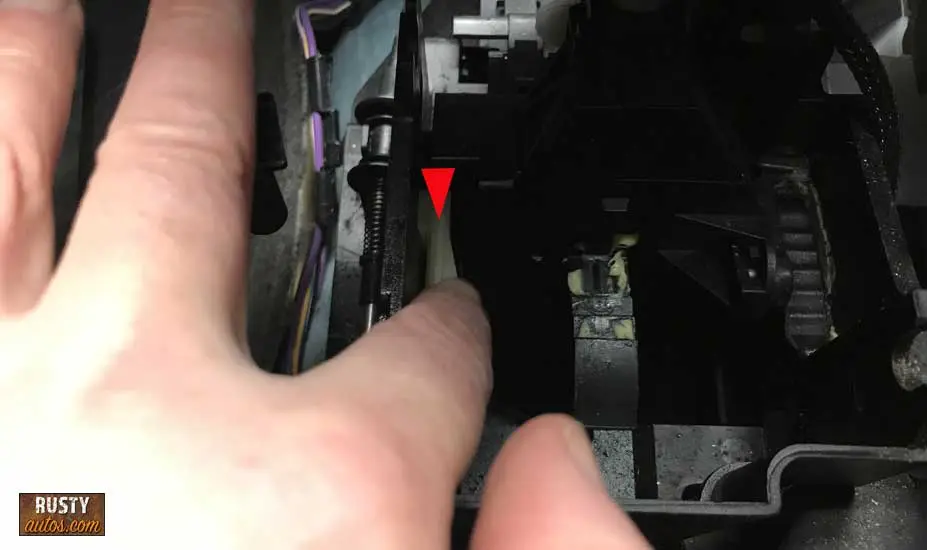
Before releasing the shifter note the following:
- Engine should be running
- Parking brake “ON”
- Foot on brake pedal
- Shift knob release held
How To Diagnose Shift Lock Issue
A shift lock issue combined with a loss of brake lights pretty much diagnoses your fault conclusively as a failure in the brake light system. You already know a shift lock won’t release without a working brake light System. So that’s where we’ll turn our attention.
How the brake light switch works
A brake light switch couldn’t be simpler, it’s a switch that opens and closes with a brake application. The brake light switch incorporates a plunger that’s located below the driver’s dash attached to the brake pedal box assembly.
Pressing the brake pedal releases the switch plunger, which powers the brake lights but also signals control modules like ECU, ABS, TCM, etc.
The brake switch circuit typically runs 12 volts and the default position is open. Applying the brakes releases the plunger and allows voltage flow to the brake lights which completes the circuit.
When the control module responsible for shift lever lock (varies by vehicle) receives a 12-volt signal, it, in turn, activates the shift lock solenoid which releases the shifter.
Brake Light Switch Check
So as you can see brake light systems aren’t very complex but some may include control modules. We won’t go into control modules in this post because for most the problem is an issue with the brake light system. And for most that is a problem with the brake light switch. So let’s take a look at the switch.
How to test the switch
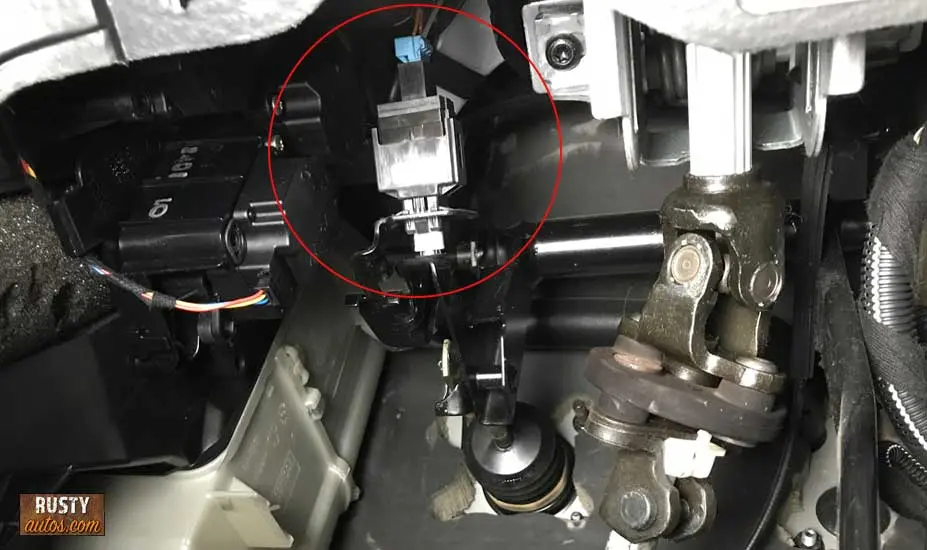
Testing is easy, you can use a DVOM set to read resistance, you don’t even need to remove the switch. Testing as follows:
- Remove lower dash panel
- Locate brake pedal switch
- Removing the pigtail connector
- Probe both sides of the switch
- Set DVOM to resistance and hit the brake pedal
A good switch will show two readings an open with brake pedal at rest and closed with the brake pedal applied.
- If you don’t have two readings, go ahead and replace the brake light switch. See replacing switch below.
- If you do have two readings, your brake light switch is good, and we’ll need to check a few other possible issues which we’ll cover right now.
Other possible causes of brake light system fault
Here is a list of other possible issues we could have, check them in turn. I’ve listed the easier checks first.
- Dislodged brake light switch – Check the switch is secure in the pedal box
- Brake light switch maladjustment – Check the brake pedal striker is fully opening the switch plunger
- Loose switch wiring – Check the wiring connector is secure and wiring in good shape
- Circuit issue – Check voltage with a volt meter or test light at the pig tail brake light connector (ignition “On”)
- Control module check – Use a scan tool to check for fault codes and check brake light status as seen by control modules when brake pedal activated
Check out the Auto electrical repair tools page to see the tools I use to fault find.
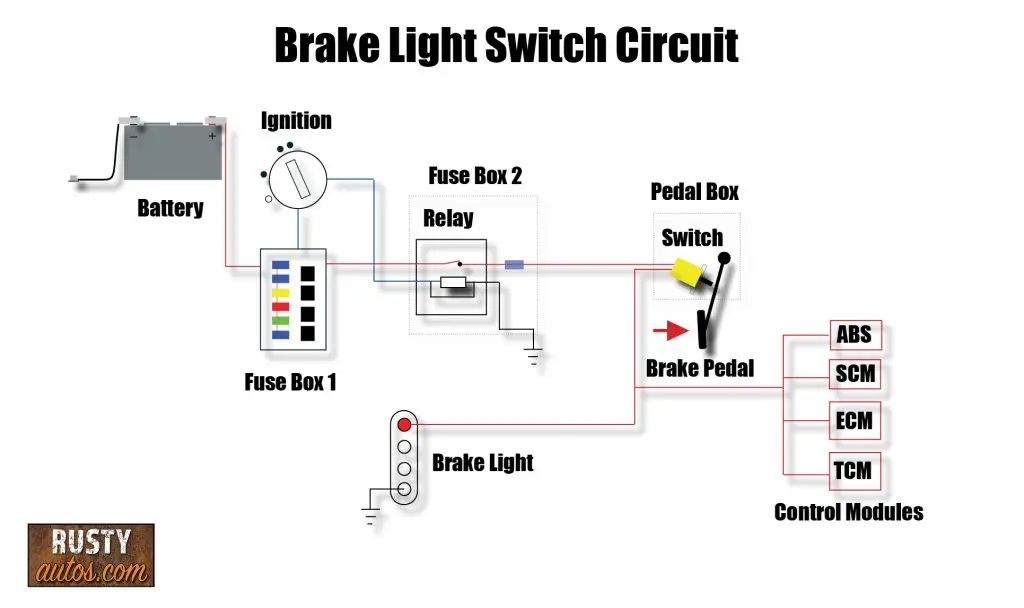
How To Replace Brake Light Switch
As said in most cases the simple solution to the problem is to replace the brake light switch. These little guys work hard and they are made from plastic.
Replacing is easy, maybe thirty minutes or one hour job. The process looks like this:
- Remove lower dash panel
- Remove pigtail connector
- Turn switch anticlockwise and release brake switch (most)
- Fit new switch in position so as the plunger is closed while brake pedal at rest
- Turn switch clockwise to lock in place
- Fit pigtail connector
- Check brake lights (ignition on) before fitting lower dash panel
Nice work!
- About the Author
- Latest Posts
John Cunningham is an Automotive Technician and writer on Rustyautos.com. He’s been a mechanic for over twenty-five years and has worked for GM, Volvo, Volkswagen, Land Rover, and Jaguar dealerships.
John uses his know-how and experience to write fluff-free articles that help fellow gearheads with all aspects of vehicle ownership, including maintenance, repair, and troubleshooting.

